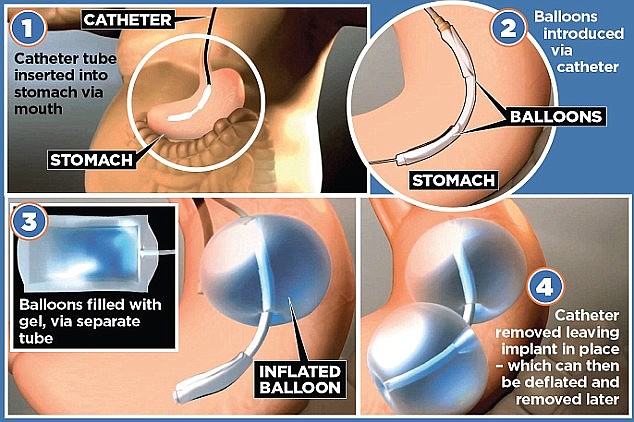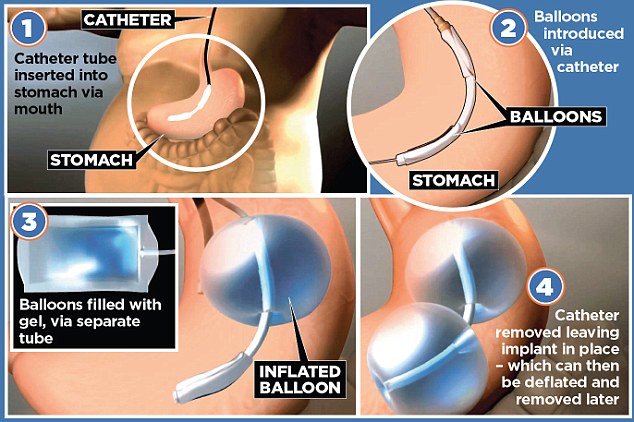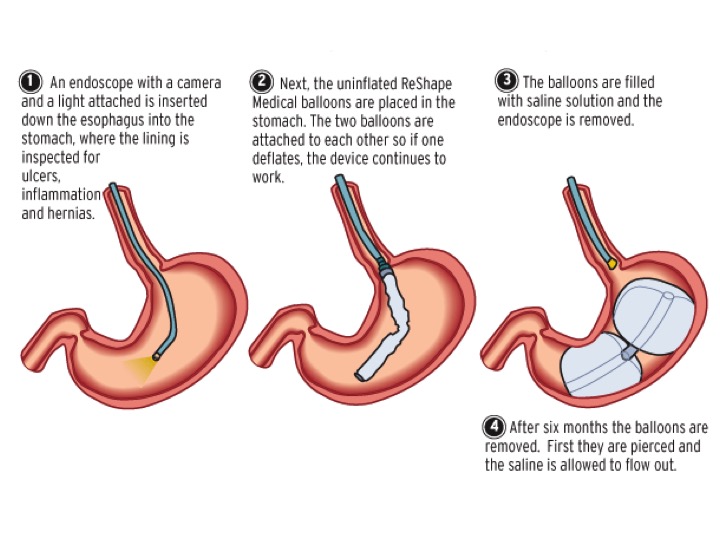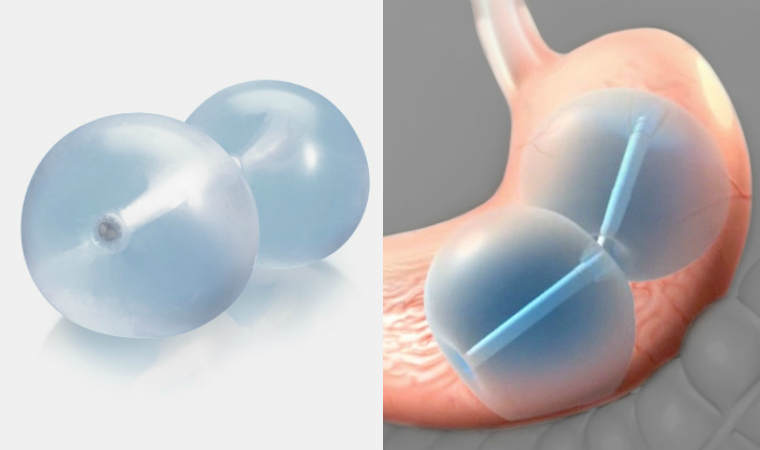Balloons can make you smile. They can be used to present your thoughts and they can carry you up, up and away.
Now they can also help you lose weight.
Thanks to recent approval from the Food and Drug Administration, doctors have the option of a bariatric balloon, a non-surgical, non-chemical way to help people drop pounds. The balloon, shaped like a dumbbell, is inserted through a tube in the mouth into the stomach, where it takes up space.
Only adults with a body mass index of 30 to 40 are eligible for the balloon. But there are between 45 million to 50 million in the U.S. with a BMI in that range, which works out to about 40 pounds to 100 pounds overweight, according to the American Society for Metabolic and Bariatric Surgery.
The stomach-balloon procedure has been available in Europe for several years. The FDA reviewed the procedure last year via testing done through eight centers around the country. Chattanooga Bariatrics was one of those centers and they are the only facilities approved to do the procedure.
Dr. Jaime Ponce, bariatric surgeon at Chattanooga Bariatrics, stresses that, while "this is not a magic bullet, what is exciting about this method is that we now have a non-surgical way to help people lose weight."
Typically, people who are candidates for the balloon are those who have tried and failed to lose weight through diet and exercise, or who are not overweight enough or at health-risk enough to require weight-loss surgery such as gastric bypass or lap-band surgery. Most of these "in-between" patients who are candidates for the balloon procedure also have obesity-related conditions like diabetes, high blood pressure or high cholesterol.
The patient feels full eating less, and in fact, can't eat too much, Ponce says.
Along with the insertion of the balloon, the program involves a year-long dietary retraining process that involves consultation with a dietitian, lifestyle changes, tracking what you eat and weight loss via a phone app and a Wi-Fi-enabled scale that work in unison to track everything. Cost for the program and surgery is around $6,800, all paid up front, Ponce says.
Two types of balloons have been approved, one each from Apollo Endosurgery and ReShape Medical, which is the type used at Chattanooga Bariatrics. In the study, after six months ReShape patients lost an average of 14.3 pounds while Apollo patients - whose balloon is called Orbera - lost an average of 21.8 pounds.
Atlanta resident Kevin Breeden participated in the study last year, driving to Chattanooga once a month after he had his ReShape inserted. He lost about 14 pounds and says "it wasn't a bad experience, but that's a lot of money for 14 pounds."
"In my opinion, it did work, but did not work to the magnitude of the expectations of what they wanted it to," he says.
Breeden says he has tried dieting and exercise programs in the past, and the key with those and with the balloon procedure, is understanding nutrition and committing to a total lifestyle change when it comes to eating.
"Just eating half a cookie or half a fried chicken isn't going to work."
Ponce stresses that the program done in combination with the balloon is crucial to successfully losing the weight.
"The balloon without the program will not work," he says.
And there are limitations and risks involved, Ponce says. It is not intended for people who take an aspirin a day as a blood thinner or who drink alcohol on a regular basis, since both can damage the balloon and increase the risk of ulcers.
The patient is put under mild sedation while the balloon is inserted. The process takes about 15 minutes, and the patient is sent home usually after an hour, Ponce says. While there is no cutting, there are side effects.
"They will feel nauseous and inertia and experience vomiting perhaps in the first three days, so we recommend they don't plan to go to work," he says. "It is worse for some people, and it can be annoying."
After that, they should not feel any discomfort or anything unusual, unless they eat too much or eat the wrong thing.
The balloon must be removed after six months because acids in the stomach can damage it. The whole procedure can be repeated, though Ponce recommends waiting six to 12 months before doing so.
Contact Barry Courter at bcourter@timesfreepress.com or 423-757-6354.




